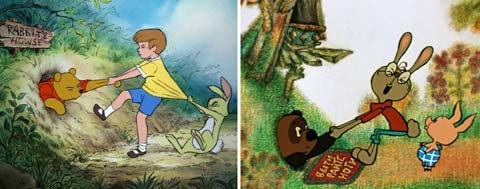Edutopia continues to be one of my favorite educational outputs. I had discovered them through my Webtools class and fell in love with their positivity and fresh ideas. This week I stumbled upon an interesting article by second-grade teacher Paula Díaz, who is currently giving her students a voice through podcasting.

I love a good podcast, but I never thought about the potential of using this form of broadcasting as a teaching tool. Podcasting allows students to express their ideas and make connections with the world around them through interviews, explanations, and teaching. It essentially puts students in the teacher seat, allowing them to educate others while researching topics themselves. It creates an authentic learning environment where students understand the importance of what they are studying because it connects and resonates with them. I am very passionate about this form of learning because I believe when students can see why they should learn something, it creates a desire to continue their educational journey independently. To learn more about the importance of authentic learning, check out my blog post, Authentic Learning in the Classroom.
Díaz knew that there were potential road bumps with trying podcasting with students so young, but she went for it because she saw the potential learning opportunities this technology could open for her students – and they loved it!
Podcasting might seem like a task for older students, but we tried it anyway, and we proved that everyone has something to say.
Paula Díaz
Díaz introduced her students to podcasting for about a week. During this time they listened, analyzed, and discussed. What would make a good podcast? Students began to prepare their episodes using the podcasting app Anchor. Although new technology is daunting, Díaz and her students did not let the fear of something new stop them. They worked together, watched YouTube videos, and asked for help when needed. Even though she may not have intended for this to be an educational step, I believe this stage of working together to try something new introduces her 7 and 8-year-old students to problem-solving strategies. This was a great demonstration of learning my example for her students. Teachers are always teaching, whether they know it or not.
The student-run podcast began with an interview with the school’s new principal. The students brainstormed questions to ask and what they wanted to know about the principal. The class voted together to narrow the questions down to five and chose five interviewers. Students practiced by recording themselves talking as well as learning about interpersonal skills such as eye contact, shaking hands, and how to greet someone.
The interview took place using nothing more than a microphone built into an iPad they already had. A misconception I had about podcasting is I previously believed you would need expensive equipment that is specifically for podcasting. However, it seems we may have all the tools we need in our classrooms.

In a single day, the podcast was ready. The Anchor app is very user friendly and it did not take long for the class to piece everything together. Even in the editing stage the project was very student-run, with the class voting on music and working together to remove unwanted sounds. Then it was published, put on Twitter and sent to the community. Giving the students the ability to learn something in a fun way that allows them to lead their learning is something they will not forget.
Thank you for taking the time to read my blog!
Follow me on Twitter for more education related discussion: @EckhardtMalisa






